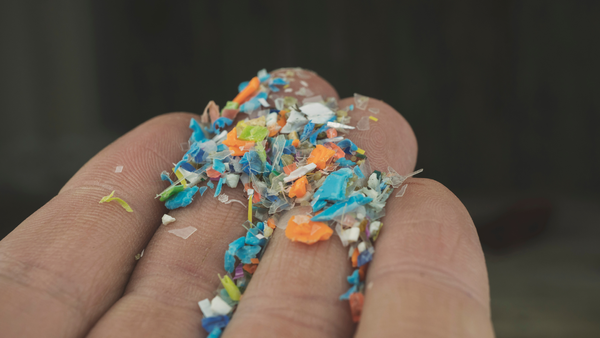Why Compostable Packaging Is Failing in Australia
Our lack of infrastructure and supportive regulations in Australia means these novel solutions are (unfairly) falling short of their promise.

I have a confession to make, dear reader.
Many of the exciting, novel and innovative natural materials I have been covering here are greenwash.
From PHA innovations to Seaweed-based materials, these compostable solutions are all currently greenwash.
And the reason they're all currently greenwash here in Australia isn't because of some nefarious deception by their makers. It's because (other than the occasional backyard compost heap) most of them would end up in landfills, given our current waste collection policies and composting infrastructure.
Do you want the good news or bad news first?
The good news is that these natural materials don't need complex and expensive machinery to bioassimilate them into compost or, in other words, soil.
All they need is compost heaps.
The bad news is that the pathway for these materials to end up in compost heaps is virtually nonexistent in most cases. This poses a massive problem for any natural material trying to gain traction in the market.
Every market is different, but New South Wales (NSW), Australia is an example of the uphill struggle these materials will face in the all-important short to medium term.
Due to a directive from NSW EPA, even certified compostable packaging and materials are not allowed in compost heaps if the organics processor wants their compost to be EPA-certified.
This is because toxic forever chemicals known as PFAS were turning up in NSW compost heaps.
Apparently, the culprits were the bamboo, bagasse cutlery, and bowls. Bad (or possibly naive?) actors have been using these toxic chemicals as oil and water barrier coatings and binding agents while selling their products as 'compostable' and 'eco-friendly'.
As a result, the NSW EPA has banned all compostable packaging (except certified caddy liners) from our green FOGO bins and compost heaps.
And with the current trajectory of policy settings and regulations (not to mention collection and processing infrastructure), it doesn't look like it will change anytime soon.
This means products made from natural materials will likely end up in landfills and (like all organic materials trapped in the anaerobic environment of a landfill) break down as methane (a potent greenhouse gas and major contributor to global warming).
Comprehensive Lifecycle Analysis and Materials Circularity reporting will unfairly punish these materials for this before they're even out of the gate. Potential customers won't see compostable biopolymers as a viable alternative, which poses a serious risk to the take-up of these materials as part of the solution.
A materials economy based on soils, not oils
While an understandable reaction to an emerging contaminant, NSW, Australia (and the world) can't afford to be so hardline.
Many compostable materials are made from feedstocks sourced from food processing and agricultural waste. For other materials, such as seaweed, their fast-growing, renewable, and sustainable feedstock sequesters carbon. Composting those materials then recycles roughly 50% of the carbon, keeping it in the biocircular loop and out of the atmosphere, where it exacerbates global warming.
In terms of the coatings many containers and packaging need for oil and water barrier performance, there are chemical-free options out there using toxin-free, bio-based and bio-assimilating coatings made from seaweed and PHA that compost down to soil.
I have spoken to industrial composters, and they are willing to take these materials on and be an integral part of this solution. All these collected materials would need is space and time to break down in open windrows (paddocks with long, narrow piles of organic material agitated or "turned" regularly by machinery). The materials would be mixed in with garden waste, not food waste, to compost down to soil, so there won't be any issues with rats or odours.

Finding PFAS in our compost heaps was a shock to the system. But to be fair, they are turning up everywhere (like microplastics, they've also been found in us). We should use this as a teaching moment about how crucial materials testing and certification will be in a circular materials economy to ensure the safety of these materials.
All you have to do is look at medicines, food safety, vehicle and aviation safety. Our institutions (while far from perfect) are incredibly effective at testing and certification to ensure safety. This would be no different.
Any material that ends up in our compost heaps should undergo rigorous testing to prove that it is bio-based, toxin-free, and bio-assimilates both in compost heaps and in natural environments if it ends up there as fugitive litter.
Only then can it be allowed on supermarket shelves and in the organic recycling system.
Our authorities need to lean into fast-tracking these systems and policies and help us accelerate a shift in our materials economy to being one based on soils, not oils.





